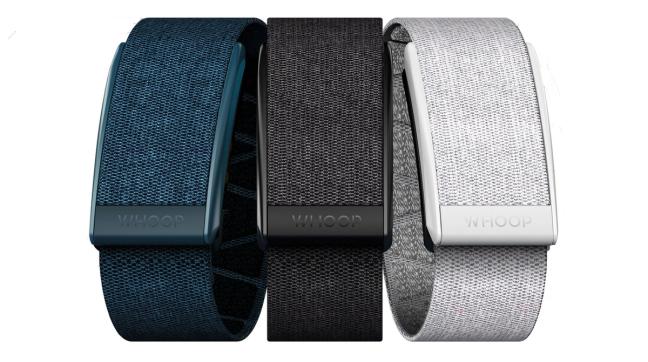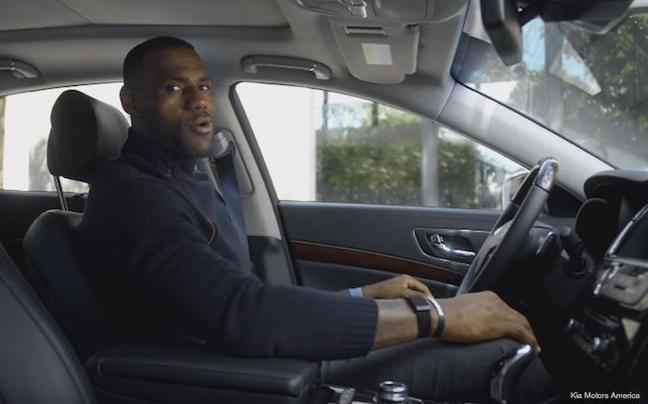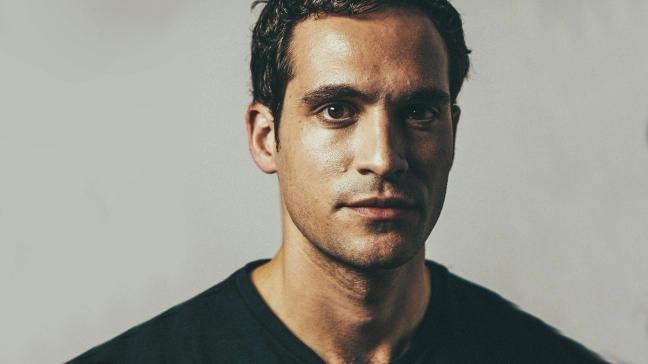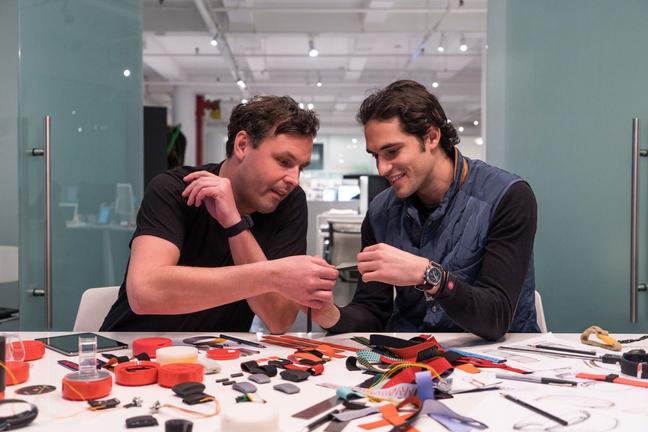Five lessons from the career of Will Ahmed, founder of Whoop
The Baader-Meinhof phenomenon is that funny thing that happens after you notice something once — and then can’t stop noticing it everywhere. The Whoop band is the Baader-Meinhof for the wrist. You see it first on a professional basketball player as he’s lining up for a three-pointer. And then it’s everywhere — an understated black streak on the wrist of a particularly ab-prone friend; a subtle uniform for a group of friends at the pub. The thing pops up like daffodils in spring — one or two at first, then a glorious flurry. You’ll be wearing one soon enough.
Will Ahmed, Whoop’s founder, has built the business around recovery — and this is what the sleek little band, at a dizzying rate of many dozens of measurements a second, measures, assesses and advises on. The idea was born of an overlooked insight: that exercise is as much about what we don’t do than what we do do. That sleeping well is often more important than training hard. That how you perform is really down to how you recover.

It works, too. Whoop’s earliest fans included the likes of LeBron James and Michael Phelps — while its newest fans include most of the VC universe, who have just pushed Whoop to a $ 1.2 billion valuation. (Will, by the way, is still only 30 years old.)
Here, in some extracts from the latest episode of the Gentleman’s Journal Podcast, Will tells us what he’s learned along the way.

1. Embrace the contrarian point of view
Many of the best ideas start from a contrarian point of view that later turns out to be right. In 2012, I was saying things like: “what if recovery is more important to performance than anything else?” That was a weird idea at the time.
I went to meet with coaches, and I would ask them: “what kind of technology would you want, if I could build you anything?” They always came back to exercise and analysis of exercise. But then when I asked them what problems they were facing, it came back to player availability and injury. So there was a huge mismatch there. This is an insight for anyone entrepreneurial: customers tend to be incredibly good at providing problems. They tend to be less good at finding solutions for those problems. And sometimes the process of solving that problem may lead you to a solution that no-one else has seen yet. That was the case for Whoop.

LeBron James was an early adopter of the Whoop Band
2. At some point, you just have to put the product out there.
It took two to three years to get to a product that I wasn’t completely embarrassed by. But I knew that we needed to put it out there. For wearable technology to be successful you need to be great at at least five things: hardware, software, analytics, design, brand, community. How many things in your life do you wear 24/7? None. So that was the vision from the earliest days.
Two of our earliest customers were LeBron James and Michale Phelps. And that was hugely validating, because there were still so many things I was embarrassed about with the product. I thought it was too big. I thought the battery life was too short. It took a long time to send the data from the sensor to the phone. The bluetooth connections would drop.
"It took two to three years to get to a product that I wasn’t completely embarrassed by..."
But just the fact that we were able to give an athlete of that calibre a green recovery signal in the morning which was based on their physiology, or a deep analysis of their sleep — that was enough for them to keep wearing it. I’ll never forget it: I was sitting on my couch with my parents, and it cuts to LeBron James in a Kia commercial — and he was wearing a Whoop strap. It was an extremely validating moment. Although the product wasn’t something a lot of people would want to wear at the time, we were clearly collecting the right data that meant an athlete like that wouldn’t want to take the band off, even when he was in a commercial for somebody else.

3. You are not your business
When you first start a business, a lot of your identity is tied up in the success of the business. I was a young person. I hadn’t had many other jobs. So if Whoop was succeeding, I felt like I was succeeding. If it was failing, I felt like I was failing. And that’s not the right lens to look at it though. The most important thing is that — independent from what the business is doing — you continue to grow and improve. You have to be pretty introspective about that.

4. Hire people who are intense but humble
What I’ve always looked for is people with a combination of high intensity and high humility. Intensity being a great work ethic a great desire to excel at the thing that they’re great at — whether they’re coding, or designing, or marketing. That’s the thing they’re great at, and they want to keep diving into it.
High humility means recognising that, in the pursuit of excellence, you don’t have all the answers. I came to recognise that when you’re in a small department and it’s fast paced and you have individuals representing entire departments, you need humility. When you have a problem you’re trying to solve, what you want is to come up with the best solution for the customer — not the one that allows you to go “I did this. That was me.” That’s where the humility comes in.

5. It’s a marathon and a sprint
Keep going is one thing I always say to myself. So much of being a successful entrepreneur — or a successful anything — is being able to maintain enormous output but for a long time. People often say building a company is more of a marathon than a sprint. But I think that actually misses the point. If you’re going to become a world class marathon runner, you’re going to be running four minute miles. How many people can even run a four minute mile? Let alone do it for 26 miles? And that’s the analogy. As an entrepreneur and a founder, you have to find a way of maintaining that kind of output for a very long time without burning out.
Read next: five insights from Jamie Siminoff’s rollercoaster career

Become a Gentleman’s Journal Member?
Like the Gentleman’s Journal? Why not join the Clubhouse, a special kind of private club where members receive offers and experiences from hand-picked, premium brands. You will also receive invites to exclusive events, the quarterly print magazine delivered directly to your door and your own membership card.


